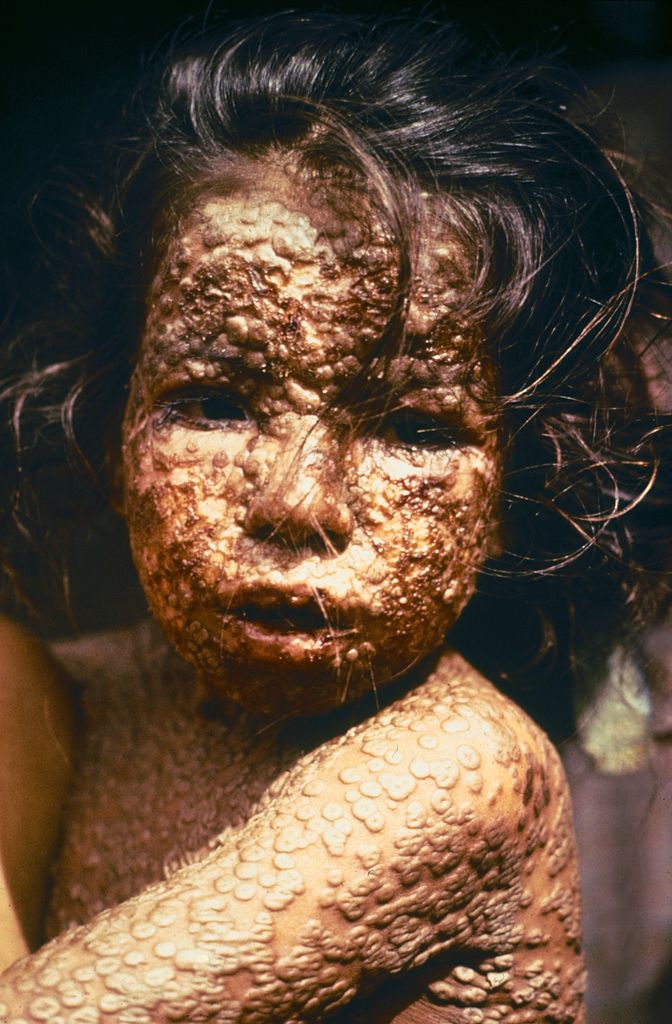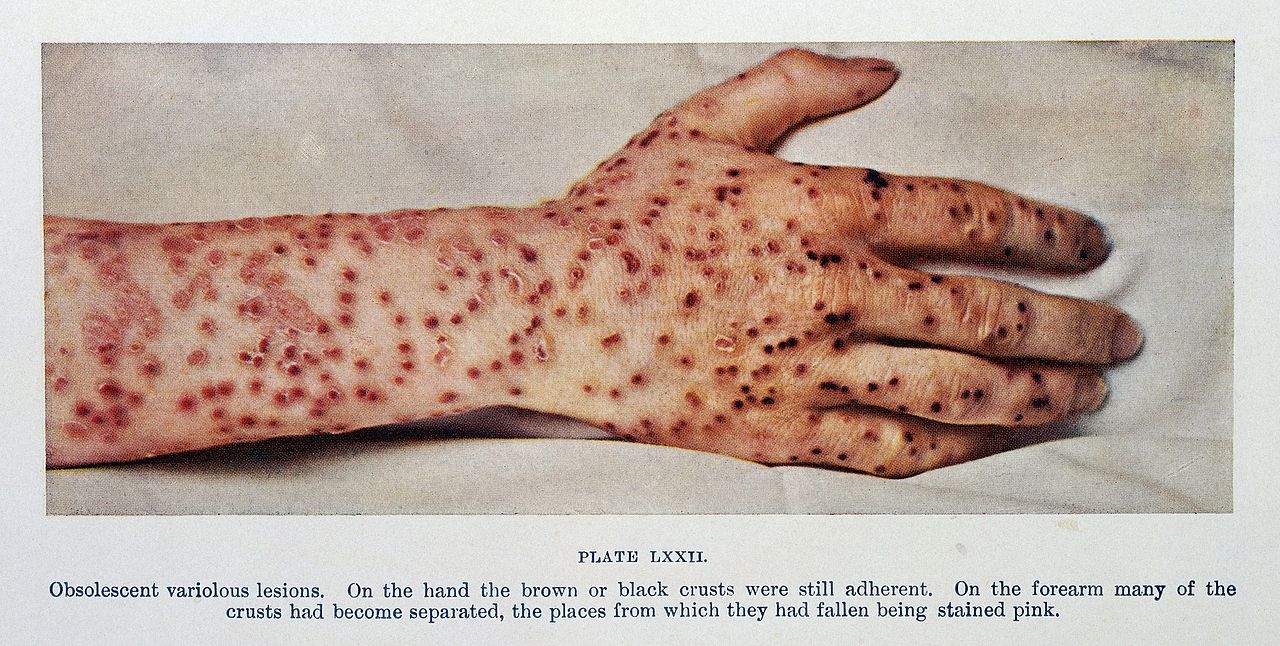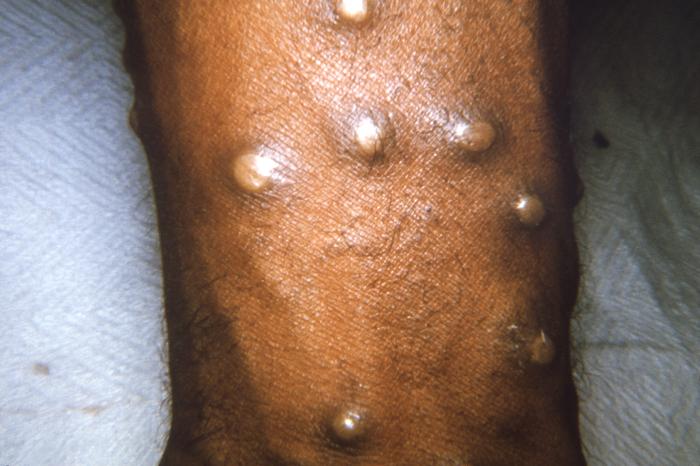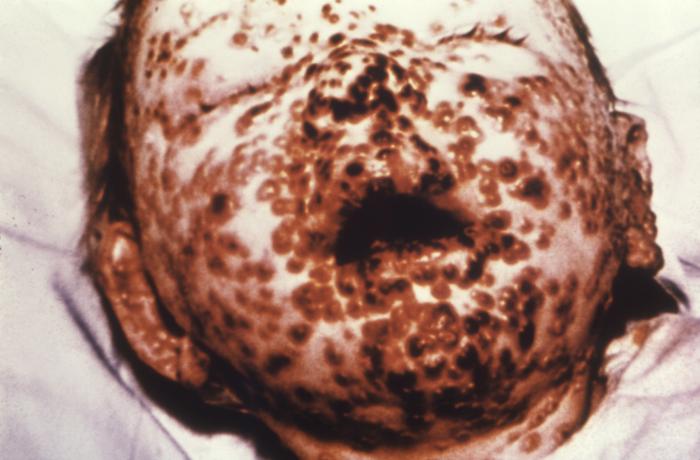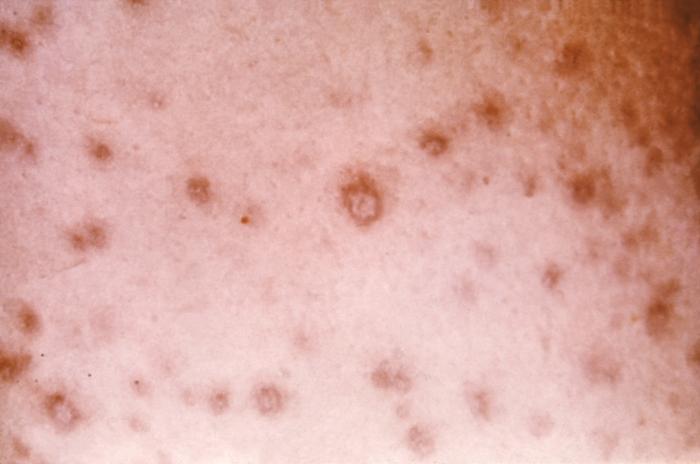[1]
Henderson DA. The eradication of smallpox--an overview of the past, present, and future. Vaccine. 2011 Dec 30:29 Suppl 4():D7-9. doi: 10.1016/j.vaccine.2011.06.080. Epub 2011 Dec 19
[PubMed PMID: 22188929]
Level 3 (low-level) evidence
[2]
Lane JM, Poland GA. Why not destroy the remaining smallpox virus stocks? Vaccine. 2011 Apr 5:29(16):2823-4. doi: 10.1016/j.vaccine.2011.02.081. Epub 2011 Mar 2
[PubMed PMID: 21376120]
[3]
Voigt EA, Kennedy RB, Poland GA. Defending against smallpox: a focus on vaccines. Expert review of vaccines. 2016 Sep:15(9):1197-211. doi: 10.1080/14760584.2016.1175305. Epub 2016 Apr 28
[PubMed PMID: 27049653]
[4]
Eyler JM, Smallpox in history: the birth, death, and impact of a dread disease. The Journal of laboratory and clinical medicine. 2003 Oct;
[PubMed PMID: 14625526]
[5]
Milton DK. What was the primary mode of smallpox transmission? Implications for biodefense. Frontiers in cellular and infection microbiology. 2012:2():150. doi: 10.3389/fcimb.2012.00150. Epub 2012 Nov 29
[PubMed PMID: 23226686]
[7]
Breman JG, Henderson DA. Diagnosis and management of smallpox. The New England journal of medicine. 2002 Apr 25:346(17):1300-8
[PubMed PMID: 11923491]
[8]
Seward JF,Galil K,Damon I,Norton SA,Rotz L,Schmid S,Harpaz R,Cono J,Marin M,Hutchins S,Chaves SS,McCauley MM, Development and experience with an algorithm to evaluate suspected smallpox cases in the United States, 2002-2004. Clinical infectious diseases : an official publication of the Infectious Diseases Society of America. 2004 Nov 15;
[PubMed PMID: 15546084]
Level 3 (low-level) evidence
[9]
Grosenbach DW, Honeychurch K, Rose EA, Chinsangaram J, Frimm A, Maiti B, Lovejoy C, Meara I, Long P, Hruby DE. Oral Tecovirimat for the Treatment of Smallpox. The New England journal of medicine. 2018 Jul 5:379(1):44-53. doi: 10.1056/NEJMoa1705688. Epub
[PubMed PMID: 29972742]
[10]
Mucker EM, Goff AJ, Shamblin JD, Grosenbach DW, Damon IK, Mehal JM, Holman RC, Carroll D, Gallardo N, Olson VA, Clemmons CJ, Hudson P, Hruby DE. Efficacy of tecovirimat (ST-246) in nonhuman primates infected with variola virus (Smallpox). Antimicrobial agents and chemotherapy. 2013 Dec:57(12):6246-53. doi: 10.1128/AAC.00977-13. Epub 2013 Oct 7
[PubMed PMID: 24100494]
[11]
Vora S, Damon I, Fulginiti V, Weber SG, Kahana M, Stein SL, Gerber SI, Garcia-Houchins S, Lederman E, Hruby D, Collins L, Scott D, Thompson K, Barson JV, Regnery R, Hughes C, Daum RS, Li Y, Zhao H, Smith S, Braden Z, Karem K, Olson V, Davidson W, Trindade G, Bolken T, Jordan R, Tien D, Marcinak J. Severe eczema vaccinatum in a household contact of a smallpox vaccinee. Clinical infectious diseases : an official publication of the Infectious Diseases Society of America. 2008 May 15:46(10):1555-61. doi: 10.1086/587668. Epub
[PubMed PMID: 18419490]
[12]
Melamed S, Israely T, Paran N. Challenges and Achievements in Prevention and Treatment of Smallpox. Vaccines. 2018 Jan 29:6(1):. doi: 10.3390/vaccines6010008. Epub 2018 Jan 29
[PubMed PMID: 29382130]
[13]
Mota BE, Gallardo-Romero N, Trindade G, Keckler MS, Karem K, Carroll D, Campos MA, Vieira LQ, da Fonseca FG, Ferreira PC, Bonjardim CA, Damon IK, Kroon EG. Adverse events post smallpox-vaccination: insights from tail scarification infection in mice with Vaccinia virus. PloS one. 2011 Apr 15:6(4):e18924. doi: 10.1371/journal.pone.0018924. Epub 2011 Apr 15
[PubMed PMID: 21526210]
[14]
Wollenberg A,Engler R, Smallpox, vaccination and adverse reactions to smallpox vaccine. Current opinion in allergy and clinical immunology. 2004 Aug;
[PubMed PMID: 15238792]
Level 3 (low-level) evidence

